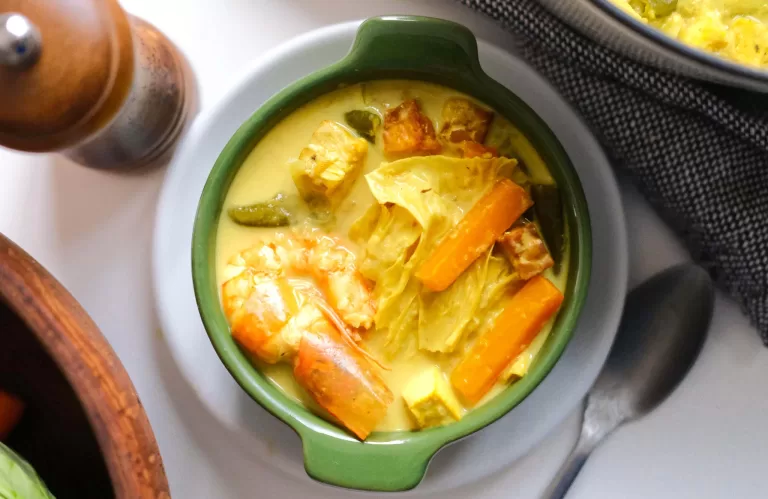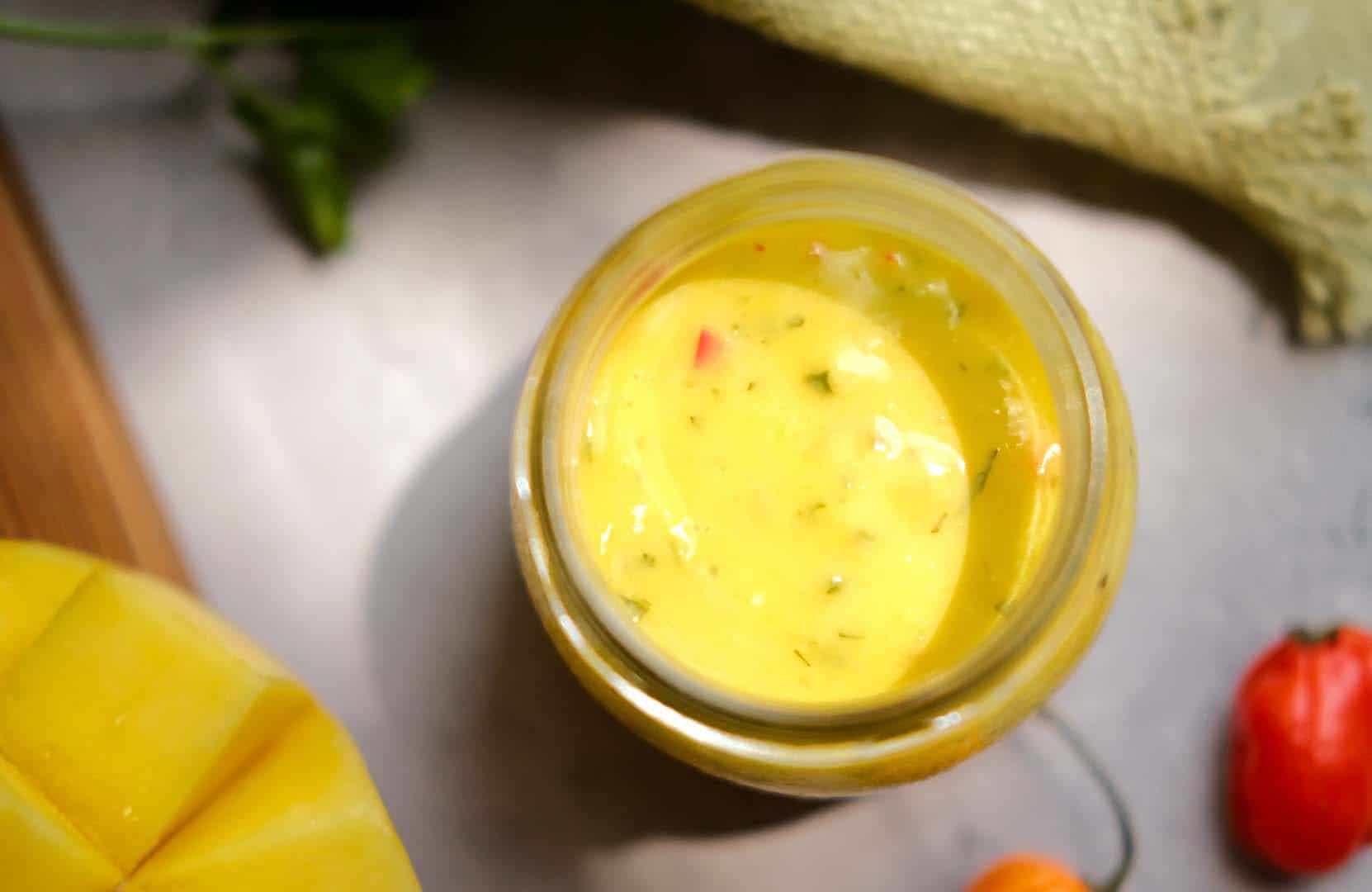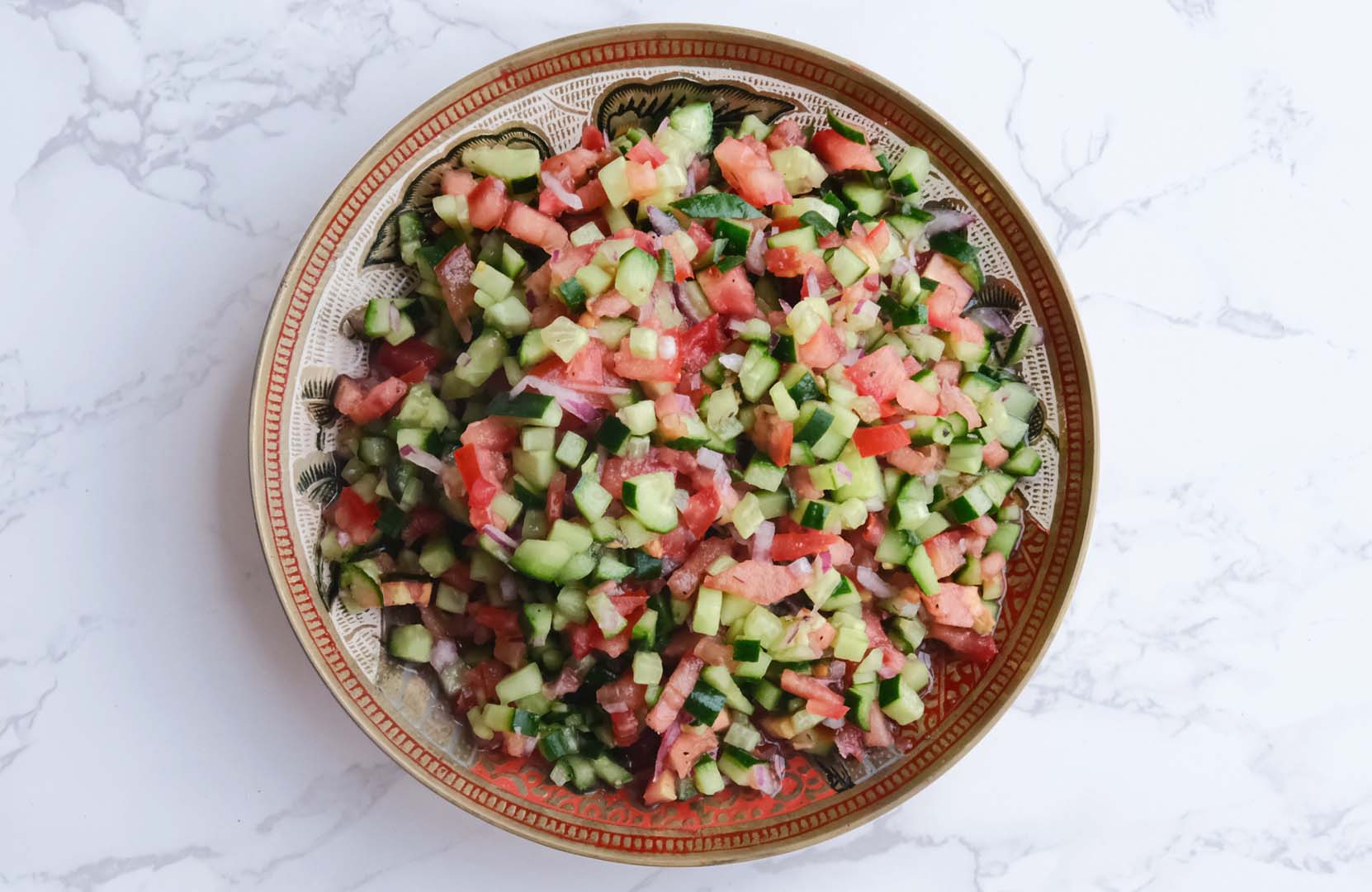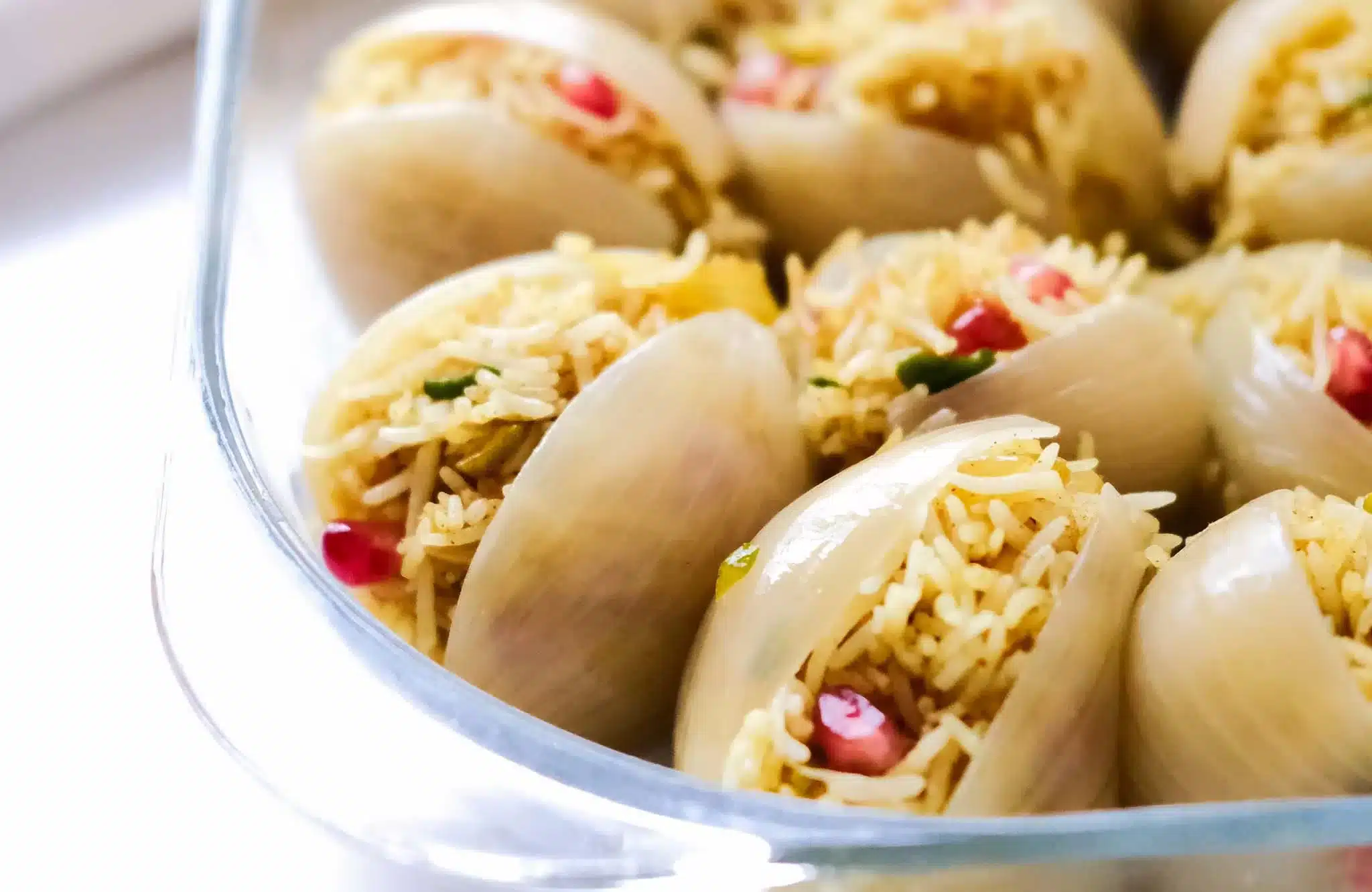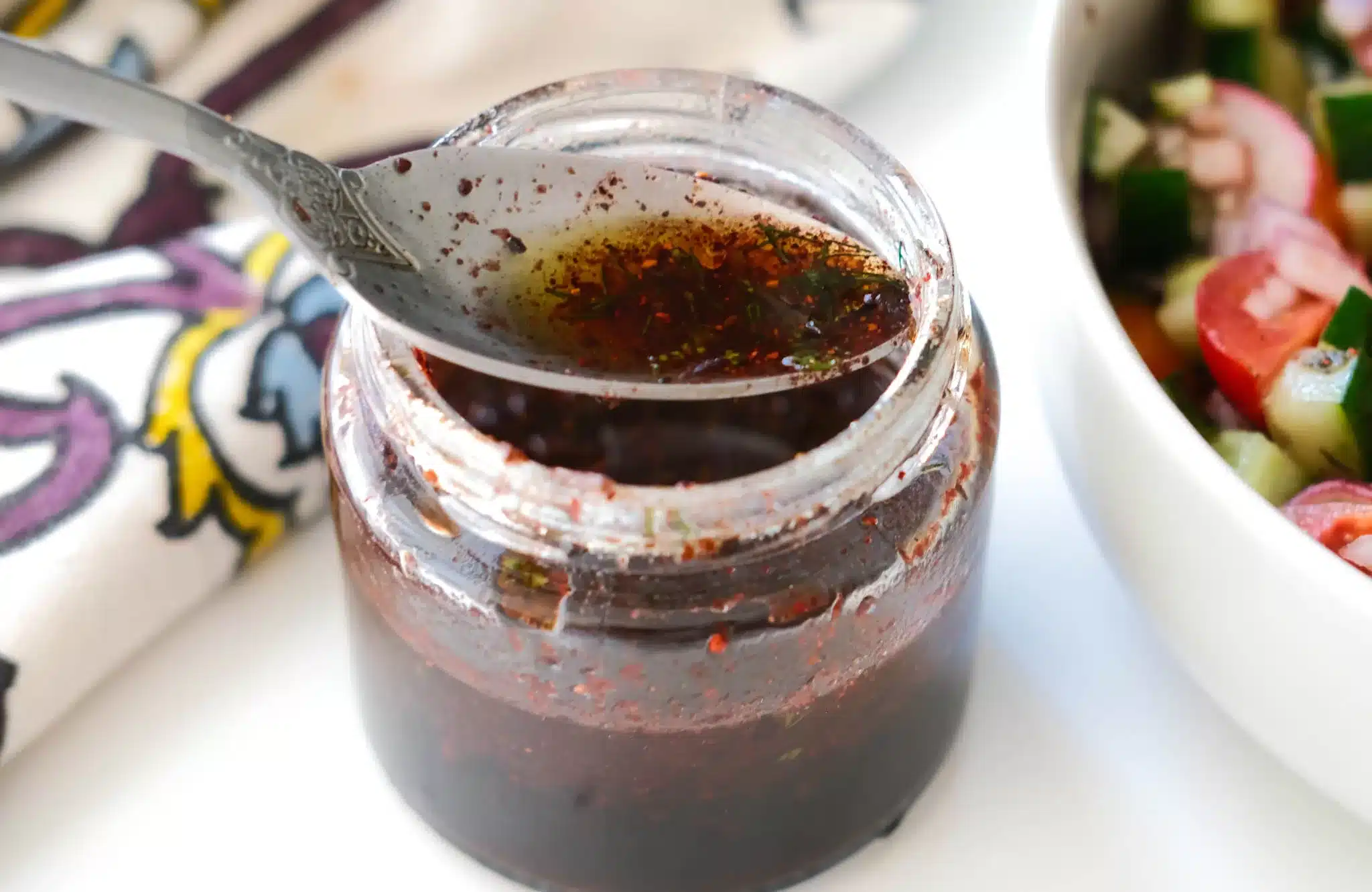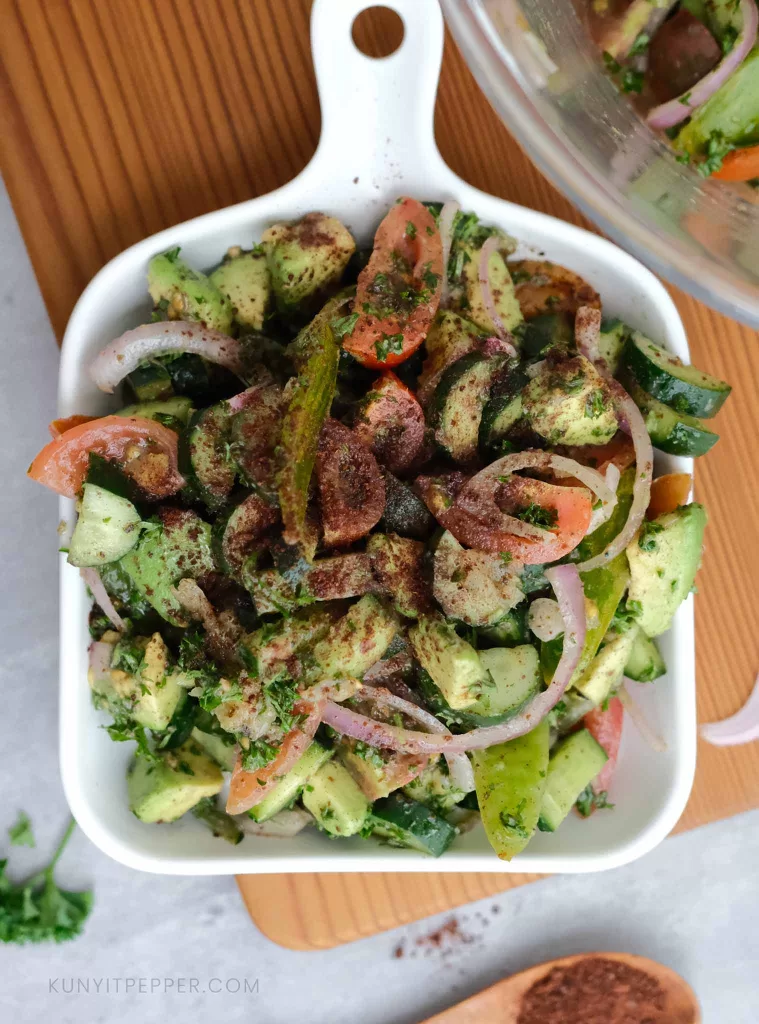
This sumac salad is an advanced version of cucumber and tomato salad. A classic Persian Shirazi salad that my mother-in-law typically makes at home. I have incorporated additional anti-inflammatory vegetables such as avocado and parsley, adding volume and flavor to the salad.
Make sumac salad with me!
About this sumac salad
The flavor of this salad combines citrusy ingredients, sumac and orange, with healthy fat – extra virgin olive oil, lightly seasoned with salt and pepper. Expect a punch of lemony sourness from the sumac, balanced with a hint of sweet orange juice with the pulps included.
While Persian Shirazi salad emphasizes on minimal ingredients – tomato and cucumber, this salad is richer in nutritious calories that make you full for a longer time. Perfect if you plan to prioritize nutritious vegetables over carbohydrates and protein.
What is sumac?
Sumac is a seasoning or spice derived from a flowering plant that has been dried and ground into a coarse powder. It has been used in Mediterranean and Middle Eastern cuisine for centuries.
Sumac is typically used as a flavor enhancer or souring agent due to its sour and tarty taste. The deep red-burgundy color of sumac powder makes a great natural coloring agent to deepen the color of meat.
I remember making a Persian meat kebab and asking my in-law why the color looked paler than her version, and she replied I needed to add more sumac to make it more red.
Aside from its flavor, sumac was used as traditional medicine in ancient times to treat various sicknesses like measles, smallpox, dermatitis, etc
Today, many cultures around the world still infuse sumac in their food or tea for its healing properties. This was noticeable during the COVID-19 pandemic, as sumac gained people’s attention for its potential to treat the virus (although it is not officially accepted).
Due to its anti-inflammatory benefits, I have adopted sumac in my pantry from my Persian in-law family. I believe incorporating various herbs and spices rich in polyphenols due to their antioxidant is healthy for my diet.
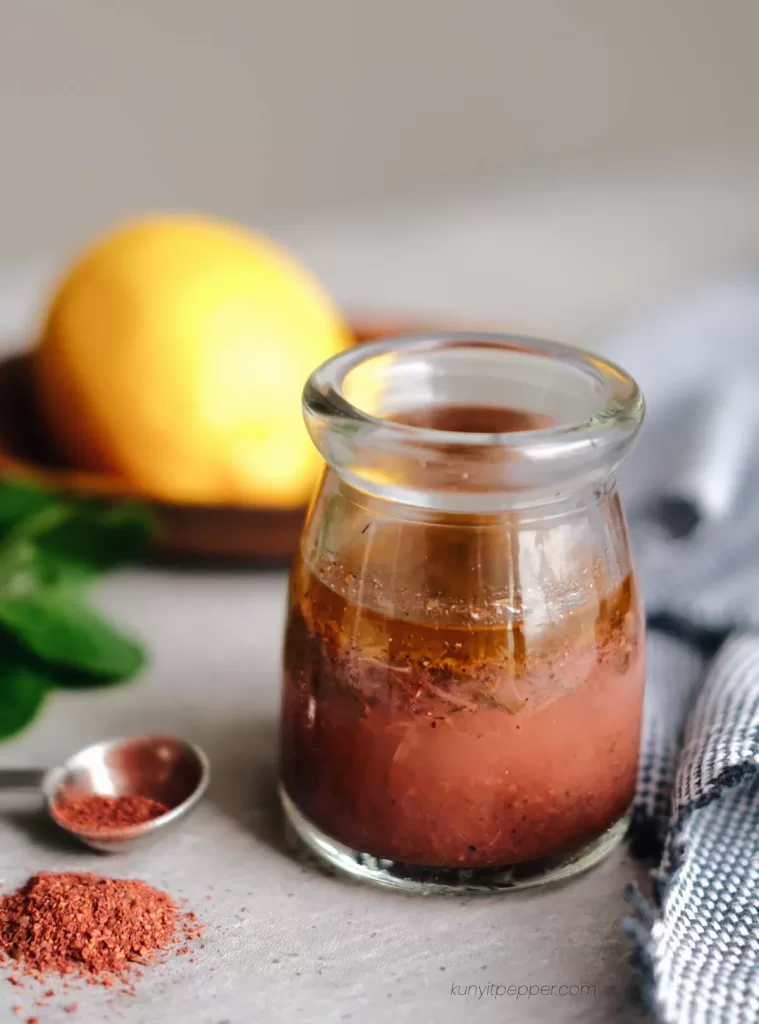
Turn THIS RECIPE into SALAD DRESSING
I’ve created a sumac salad dressing that includes the flavoring ingredients in this recipe. Check my recipe post here.
Benefits of sumac – backed by science
Sumac is one of the herbs or seasonings you might want to adopt if you are on an anti-inflammatory diet or trying to adopt more healthy Mediterranean or Middle Eastern cuisine. It contains numerous health benefits, as found in early research.
Anti-inflammatory
In this study, the phenolic compounds in sumac were shown to reduce the release of inflammatory substances and fight H. pylori bacteria.
Rich in antioxidant
Eating foods rich in antioxidants helps to keep us healthy and prevents chronic diseases.
In this study involving both humans and animals, sumac is found to have antioxidant properties that help protect DNA from damage.
Another study supported this finding and pointed out that this might be from its gallic acid content.
The antioxidant effect in sumac is also found to reduce muscle pain among athletes.
May help in reducing blood sugar & cholesterol levels.
This finding pointed out that sumac may be beneficial for people with type 2 diabetes as it potentially aids in controlling blood sugar and cholesterol levels.
Ingredients to make sumac salad
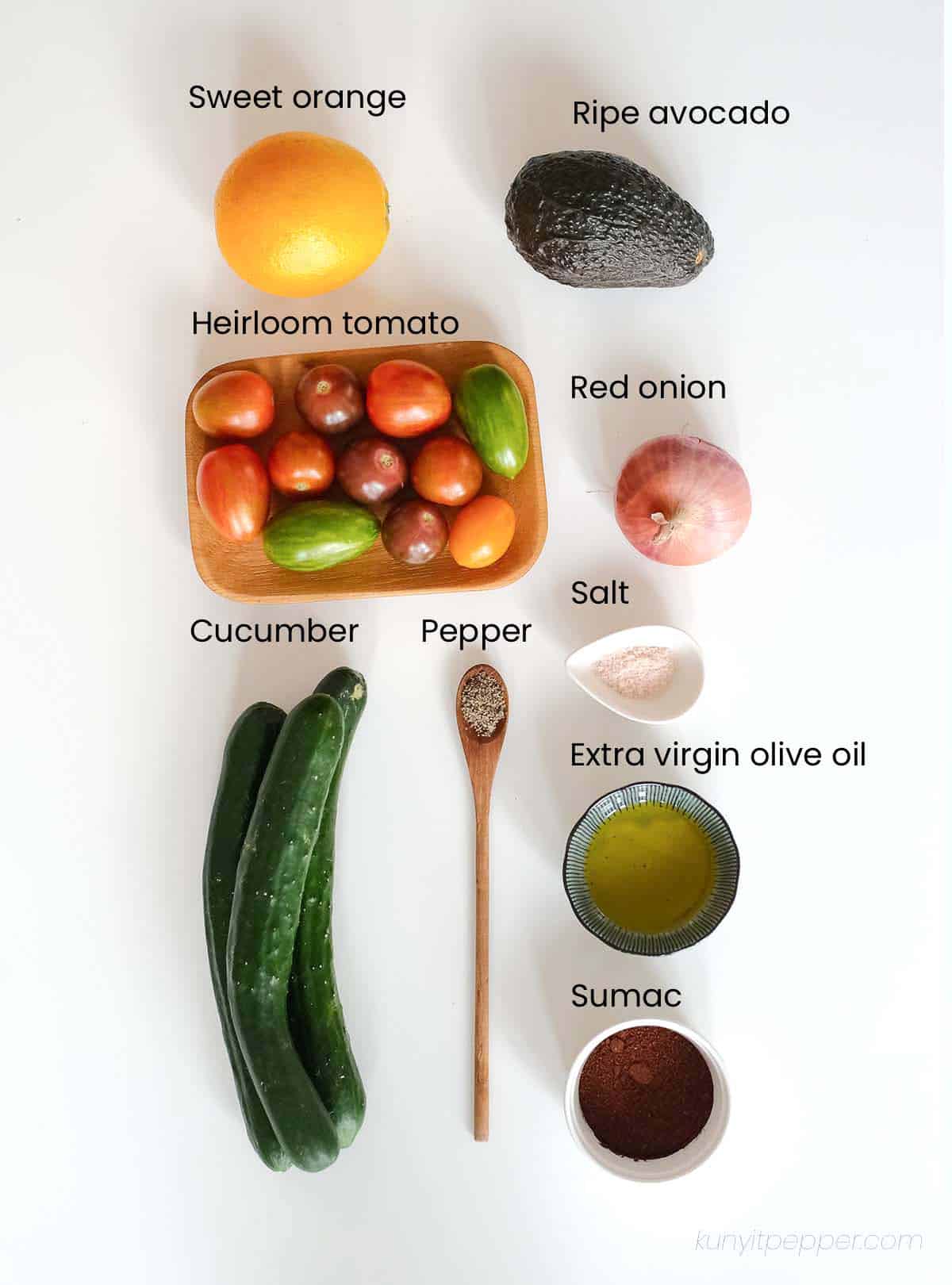
Tomatoes – Heirloom tomatoes are my go-to for a raw salad recipe. They are sweeter, less acidic, less seedy, and tastier. You can choose any type you like: Roma, cherry tomatoes, or normal ones.
Cucumber – Persian and Japanese cucumbers are the best choice for raw salads as they are crunchy and less seedy. I prefer to eat with the skin. However, it is up to you if you like them skinless.
Avocado – This addition makes a creamy and full-bodied salad. It enhances the taste and adds healthy fat to your diet. Make sure you find a ripe avocado with dark purple skin that is slightly soft when you gently press with your finger.
Onions – Red onions have a strong and punchy flavor. You just need a small amount, adding just enough sharpness. You may choose white onions if you prefer a sweet and subtle taste.
Parsley – Parsley is another anti-inflammatory green that I always have handy in my pantry. These herbs add flavor to the salad, especially the fresh ones.
Orange juice – Freshly squeezed orange juice is my secret to naturally sweetened fresh salad. I suggest including the pulp to reap the most of the vitamin C in your salad bowl.
Sumac – The star ingredient in this salad recipe, sumac, not only acts as the souring agent but has numerous anti-inflammatory benefits that you could reap. You can find them in the Middle Eastern market or find them online. However, beware of a poison sumac. It is important to buy from a trusted source and always check for reviews when buying from a new place.
Extra Virgin Olive Oil – Make sure you use a good quality extra virgin olive oil that has a darker and greener color.
What to eat this sumac salad with?
You can serve this as a side dish with any mains or as an appetizer. I like to pair it with Persian Lentil Rice as it balances the sweetness of the sautéed onion with dates.
Other salad recipes you might like
2
pax5
minutes5
minutesInspired by my mother-in-law’s Persian Shirazi salad, this salad incorporates more anti-inflammatory vegetables with a hint of sweet and sour dressing.
Ingredients
3 Japanese / Persian cucumbers – Cut into bite-size
250g heirloom tomatoes – Cut into wedges
1 ripe avocado – Cut into cubes
½ Red onion – Thinly sliced
A bunch of parsley – Thinly chopped
1 and ½ tbsp sumac powder
2 tbsp of extra virgin olive oil
½ of freshly squeezed orange juice – include the pulp
½ tsp salt
¼ tsp ground pepper
Directions
- Mix all the vegetables in a bowl
- Season with salt, pepper, sumac, olive oil, and orange juice
- Mix gently until fully incorporated.
Recipe Video
🥣 Did you try this recipe? Let me know your thoughts in the comment below.





